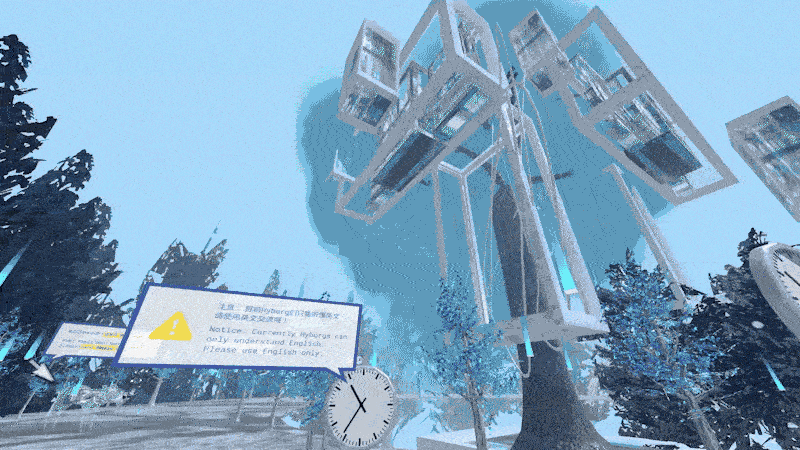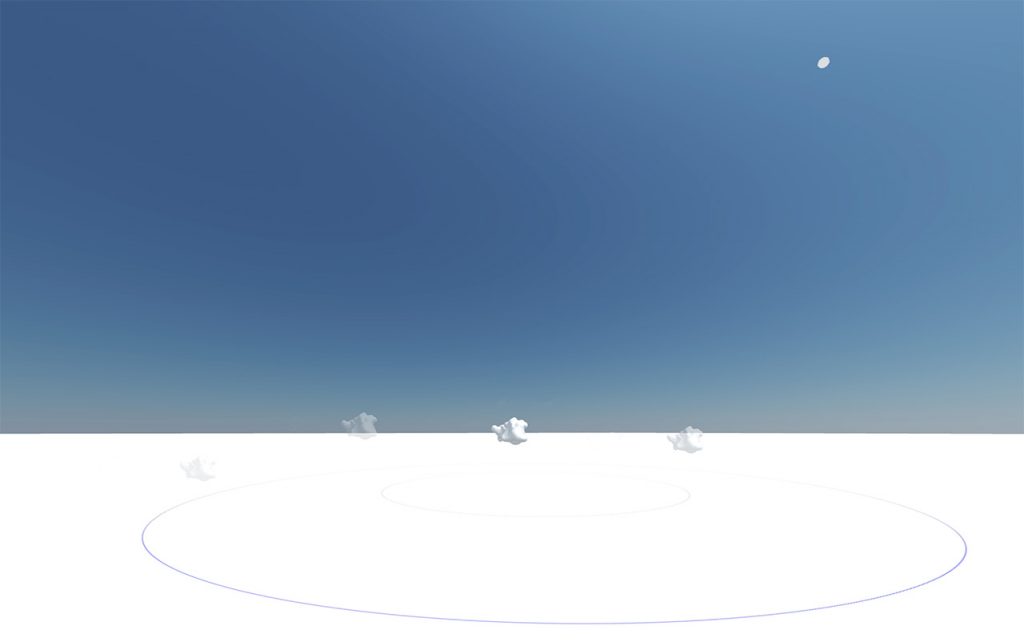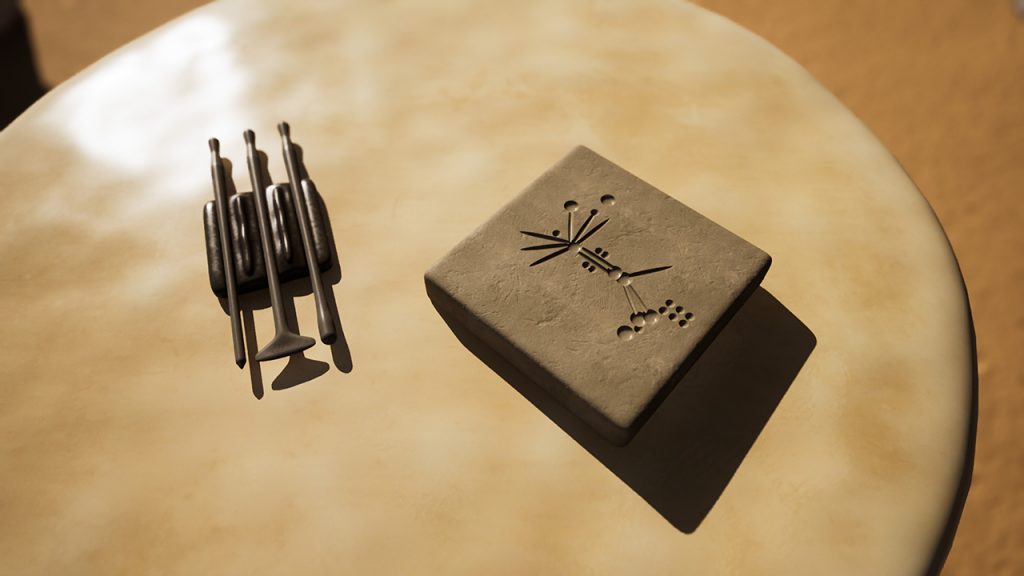In May 2020, following a two-month COVID-related delay, Beijing’s X Museum officially opened to the public in a way that announced its cutting edge bona fides. The X Museum Triennial marked the institution’s inaugural showcase, with its headlining exhibition, How Do We Begin?, arraying a slate of multimedia works that probed the new experiences brought forth by the digital age. Aptly, the show had a digital counterpart: an X Virtual Museum, which recreated the venue’s physical architecture in 3D, with a virtual lobby where visitors could locate information on the Triennial’s 32 participating artists.
The virtual museum was well-timed and well-aimed — arriving in the midst of a global lockdown, while emphasizing the institution’s intentions to color outside of museological conventions. To the latter, X Museum has recently launched X Virtual, dubbed “an assemblage of virtual worlds” where players can meet, gather, and take in a diversity of artist-made environments. As X Museum’s Poppy Dongxue Wu, who curated How Do We Begin? and co-curated X Virtual, tells us, “If the 2020 virtual project was a single-player, explorable ‘game,’ then X Virtual is a multiplayer ‘game.’”

“If the 2020 virtual project was a single-player, explorable ‘game,’” says X Virtual’s co-curator Poppy Dongxue Wu, “then X Virtual is a multiplayer ‘game.’” Image: CheeseTalk, “Hyborg Agency,” 2022 / X Museum on WeChat
X Virtual’s first showcase, X Virtual Incubator, has already unveiled its first four metaversal works, created by an international set of digital artists — Gabriel Massan, Kim Laughton, CheeseTalk, and ayrtbh — working with a variety of technological tools. Joining via their mobile and desktop devices, or VR headsets, visitors can engage with these digital worlds and jointly partake in gamified environments.
With Incubator, X Museum doesn’t just make its entry into the metaversal conversation, but more so, looks toward advancing the intersections between art and gamified experience, the virtual and physical. At the exhibition’s launch, we spoke to X Virtual’s curators, Wu and Pete Jiadong Qiang, on what our new virtual condition means for art, artists, and X Museum.
What are some of X Virtual’s key objectives?
Wu: X Virtual is set to establish an open platform for digital art and its creation, bringing together creative virtual worlds built by the artists. Similar to multiplayer online games, it provides 3D meet-ups and supports a range of functions. The project also highlights new artistic approaches adopted for and embedded in the virtual environment. For Incubator, each artist has a particular take — algorithmic sound, audiovisual space, game, AI chatbots.
How do you see X Virtual aligning with X Museum’s mission or values?
Wu: X Museum supports emerging artists and interdisciplinary practices, domestic and international. It also sets out to break through traditional ways of exhibiting art. X Virtual Incubator also aligns with this central mission — the project brings together four emerging artists working in different geopolitical contexts and with transnational cultural backgrounds.

“Hyperbolic Time Chamber” by ayrtbh deploys electronic and algorithmic sound clips against a minimalist landscape, centering sound perception as participants use their auditory systems to navigate the space. Image: X Museum
What do you hope the works in X Virtual Incubator reveal about the potential of virtual environments?
Qiang: X Virtual Incubator explores an alternative method of creating audiovisual space that can trigger unexpected and unusual inter-mediated interactions between virtual and physical spaces.
Wu: We want to create virtual experiences that are irreplaceable by physical experiences. Incubator commissions artists to work directly on X Virtual’s server. In this sense, it also acts like a petri dish for new artistic interventions. Because the role of an artist is slightly shifted to a developer, they start thinking about user interactions and how the work can be activated through these interactions, and if [or] how new meanings of the work can be generated through the participation of online audiences.
As you’ve explored virtual and metaversal environments over the past two years, what’s surprised you the most?
Wu: We have been dealing with many technical issues, such as linking Discord bots to X Virtual and making an afterimage of an avatar. However, the most exciting moments have always been seeing the artworks being finalized by the artists. I can’t forget, on handover day, walking in Gabriel [Massan]’s “Brazil street” with baile funk traveling left and right; and having my own sound mix while walking in ayrtbh’s minimalist sound space. Artists have so much to offer to this new virtual environment.
Qiang: Various crossovers between web technologies, VR interactions, video games, and fandoms shift the existing notions between real-life environment and game space. The entanglement of virtual and physical spaces encourages multiple cosmos to form their own understandings between art, culture, and technology.

Centered on an ancient temple, Kim Laughton’s “Slab Ceremony” will be linked to a physical installation at X Museum in September. Image: X Museum
X Virtual Incubator is due for an offline presentation in September. What can you share about what this onsite installation will offer in terms of visitor experience?
Wu: When conceiving the project, we were particularly interested in physical-virtual spatiality and online-offline intermediation. Kim [Laughton] made an ideal proposal for us — there are two interlinked spaces in his virtual world. His virtual “museum display room” is a 1:1 replica of gallery 9 of X Museum. For this physical showcase, he 3D-printed a few “artifacts” and printed some illustrations for elaboration. There will also be a necklace on display, which can be found in the museum shop. Kim’s work perfectly articulates physical-virtual counterparts and smoothly links with museology and merchandise.
Lastly, what further or as-yet untapped opportunities do you see for artists in the virtual space?
Qiang: I want to explore different approaches to allow multiple artists to co-create the virtual space in X Virtual simultaneously that can be seamlessly interacted with in both VR and non-VR devices worldwide.



